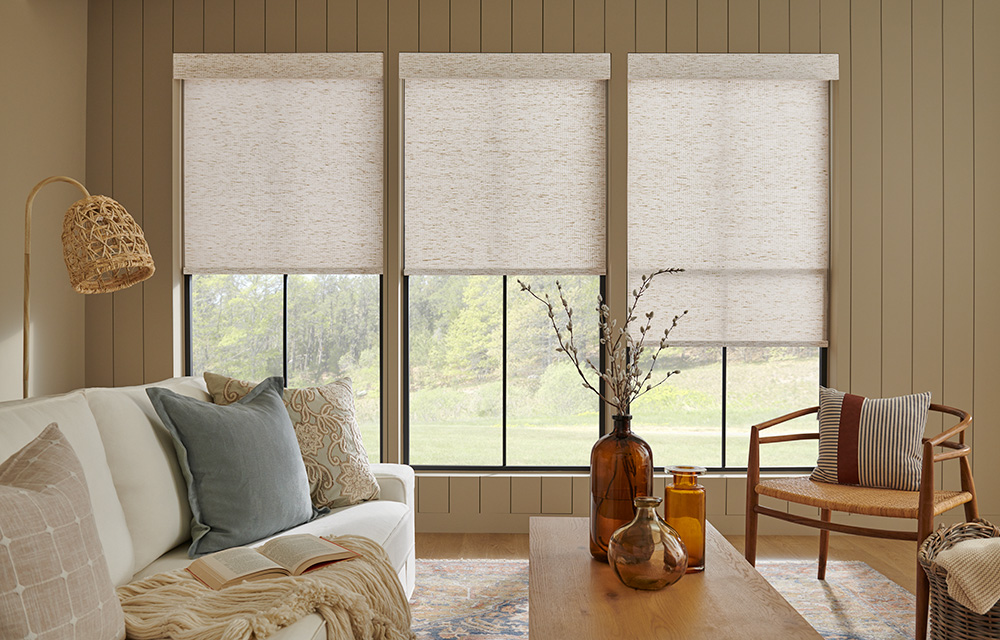
Venetian blinds are a timeless and versatile window treatment option that has been popular for decades. Known for their classic appeal and functional design, Venetian blinds offer a perfect blend of style and practicality. They consist of horizontal slats, typically made from wood, metal, or plastic, which can be tilted to control the amount of light entering a room. In this comprehensive guide, we will delve into the various types, benefits, and installation processes of Venetian blinds, providing you with all the information needed to make an informed decision for your home or office.
Types of Venetian Blinds
Wooden Venetian Blinds
Wooden Venetian blinds are a popular choice for those looking to add a touch of natural elegance to their interiors. These blinds are typically made from high-quality hardwoods such as oak, cherry, or basswood. They offer excellent insulation properties, helping to keep your home warm in the winter and cool in the summer. Wooden blinds are available in a variety of finishes, from natural wood stains to painted options, allowing you to match them with your existing décor seamlessly.
Aluminum Venetian Blinds
Aluminum Venetian blinds are known for their durability and modern appearance. These blinds are lightweight, corrosion-resistant, and easy to maintain. Aluminum blinds come in a wide range of colors and finishes, making them a versatile choice for any room. They are particularly well-suited for areas with high humidity, such as kitchens and bathrooms, where other materials might warp or deteriorate over time.
Plastic Venetian Blinds
Plastic Venetian blinds are an economical and practical choice for many homeowners. These blinds are lightweight, easy to install, and come in a variety of colors and styles. While they may not offer the same level of durability as wood or aluminum blinds, plastic blinds are ideal for temporary solutions or areas where budget constraints are a primary consideration.
Benefits of Venetian Blinds
Light Control and Privacy
One of the primary advantages of Venetian blinds is their ability to control light and privacy effectively. The adjustable slats allow you to precisely regulate the amount of natural light entering the room, creating the desired ambiance. By tilting the slats, you can also maintain privacy without completely blocking out the light, making Venetian blinds a versatile window treatment option.
Energy Efficiency
Venetian blinds can significantly improve the energy efficiency of your home. By adjusting the slats, you can control the amount of sunlight entering the room, reducing the need for artificial lighting and air conditioning. In the summer, closing the blinds can help keep your home cooler, while in the winter, opening them can maximize the warmth from the sun.
Aesthetic Appeal
Venetian blinds add a touch of sophistication to any space. With a wide range of materials, colors, and finishes available, you can easily find a style that complements your interior décor. Whether you prefer the natural beauty of wood, the sleek look of aluminum, or the practicality of faux wood or plastic, Venetian blinds can enhance the overall aesthetic of your room.
Installation of Venetian Blinds
Measuring Your Windows
Proper measurement is crucial for the successful installation of Venetian blinds. Start by measuring the width and height of your window opening. For inside mounts, measure the width at the top, middle, and bottom, and use the narrowest measurement. For outside mounts, measure the width and height of the area you want to cover, adding extra for overlap.
Choosing the Right Mount
Decide whether you want an inside mount or an outside mount. Inside mounts fit within the window frame, providing a sleek and clean look. Outside mounts are installed above the window frame, covering a larger area and offering better light control and privacy. The choice between inside and outside mounts depends on your preferences and the specific requirements of your windows.
Installing the Brackets
Mark the positions for the brackets based on your measurements and mount type. For inside mounts, place the brackets inside the window frame. For outside mounts, position the brackets on the wall or window molding. Use a level to ensure the brackets are straight, and secure them with screws. Make sure the brackets are firmly attached to support the weight of the blinds.
Maintaining Your Venetian Blinds
Regular Dusting
Dust your Venetian blinds regularly to prevent the buildup of dirt and grime. Use a feather duster, microfiber cloth, or a vacuum cleaner with a brush attachment to remove dust from the slats. Tilt the slats up and down to clean both sides thoroughly.
Deep Cleaning
For a more thorough cleaning, remove the blinds from the brackets and lay them flat. Wipe each slat with a damp cloth and mild detergent, then rinse with clean water. For wooden blinds, avoid excessive moisture to prevent warping. Allow the blinds to dry completely before rehanging them.
Repairing and Replacing Parts
Over time, some parts of your Venetian blinds may wear out or break. Keep spare parts, such as slats, cords, and brackets, on hand for quick repairs. If a slat is damaged, it can often be replaced individually without needing to replace the entire blind. Regularly inspect your blinds for any signs of wear and address issues promptly to extend their lifespan.
Conclusion
Venetian blinds are a stylish and functional window treatment option that can enhance the look and feel of any room. With various materials, colors, and finishes available, they offer versatility and customization to suit your specific needs. By providing excellent light control, privacy, and energy efficiency, Venetian blinds are an investment that can improve both the aesthetic and functionality of your space. Proper installation and maintenance will ensure that your Venetian blinds remain a beautiful and practical addition to your home for years to come.










